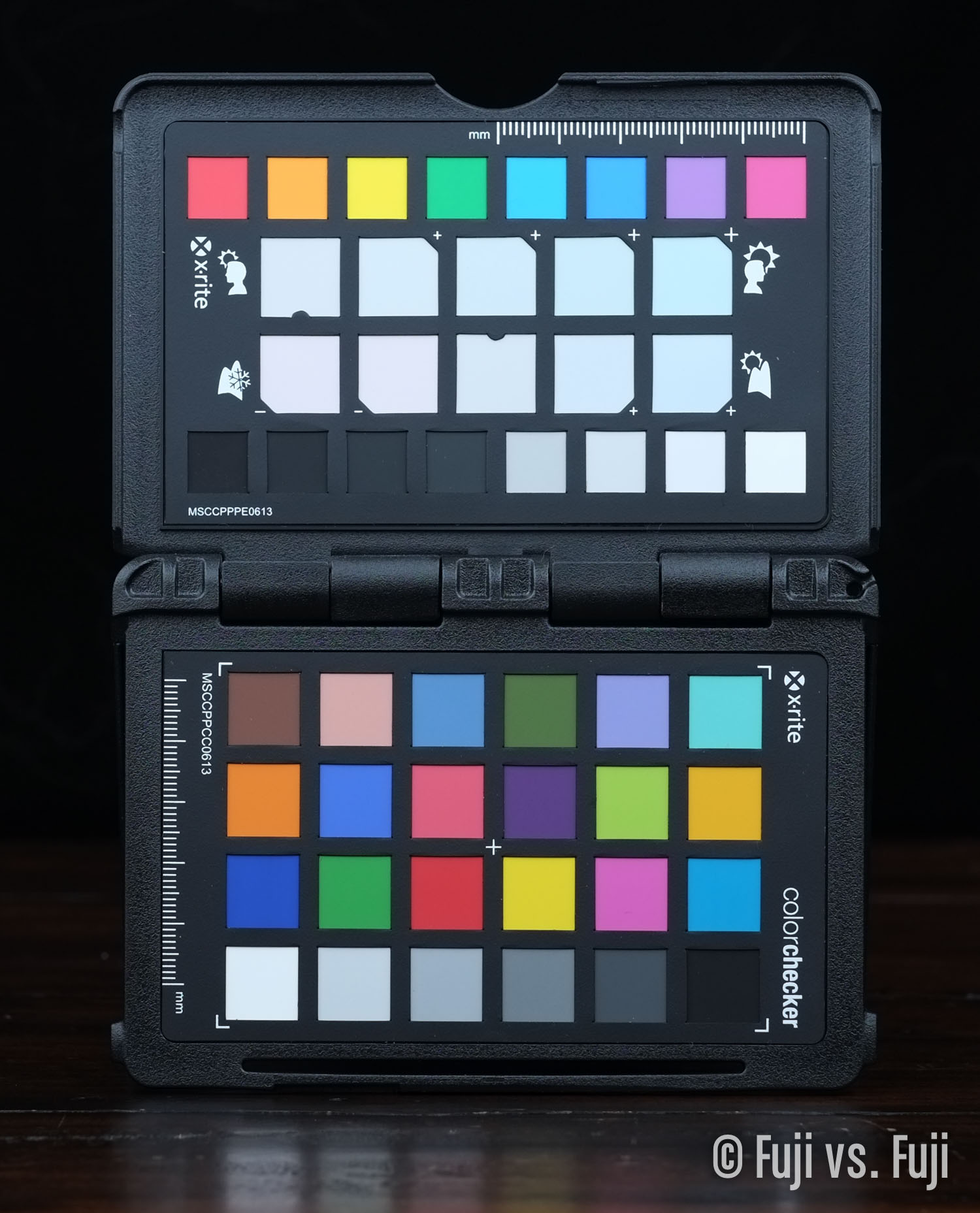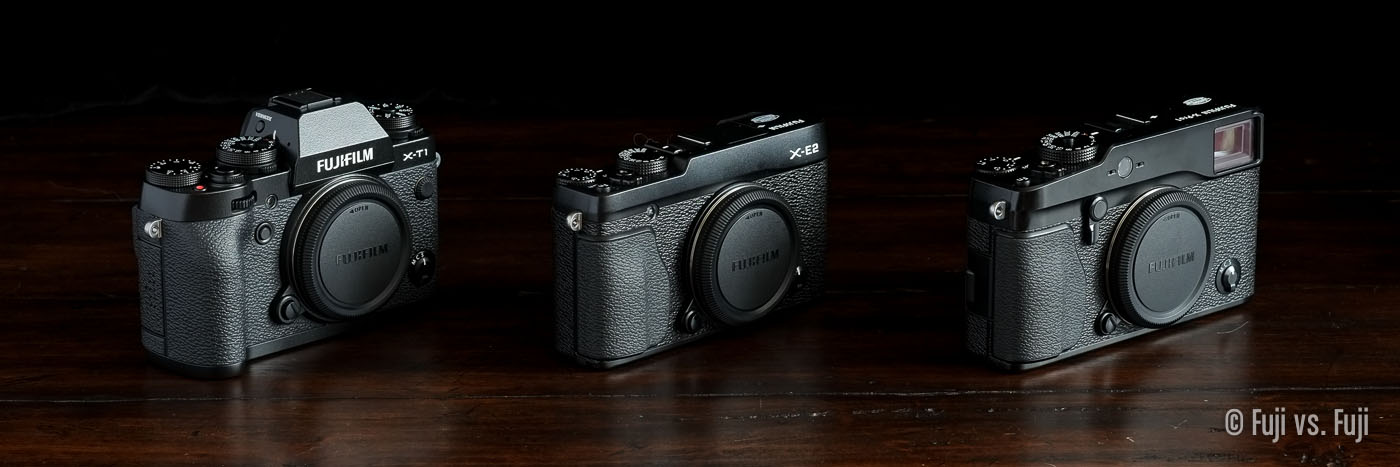More X-E2 Firmware Confirmation
/While technical details have still not been finalized, and there’s still a bit of a wait, this tweet from Steven McDougall ought to make X-E2 owners happy. Now, about the X100T...
While technical details have still not been finalized, and there’s still a bit of a wait, this tweet from Steven McDougall ought to make X-E2 owners happy. Now, about the X100T...
This is why i love #FUJIFILM pic.twitter.com/WM65aBtIsX
— Steven McDougall (@ClydebankPhotos) July 23, 2015

The choice between a new X-T10 and the X-E2 has become a little more tricky. At least, it will be sometime soon-ish. Fujifilm has confirmed another firmware update for the X-E2. In my comparison, I posited that the X-E2 was probably end-of-life as far as firmware upgrades are concerned. Turns out I was wrong, and I couldn’t be happier about that.
My Versus piece saw a minor update to reflect the firmware news, and will be overhauled once the firmware’s feature set is at least officially announced. What’s of particular interest to me is how early days this is. All Fuji has said in any sort of on-the-record format is they’re planning an update, and will determine what is included in the update based on requests from users. I think it’s pretty safe to say the new AF features (multi-point, zone, wide/tracking, eye detection) will be included, but what about a UI update? Or a rotating EVF UI? Can Fuji please, for the love all that is good and pure, make the left and right function buttons customizable, and set playback to the LCD even when EVF-only has been chosen for composition?
While the early nature of this announcement pacifies X-E2 owners and gives them something to look forward to, it also leaves us with no sense of when this update will be available. Most of the internet seems to think Fuji will intentionally impose a long delay as they will not want to cannibalize sales of their new X-T10, but I think a bigger reason for the wait will come down to the engineering resources Fuji has to put on the project. Would Fuji really be disappointed if people buy one Fuji camera body over another? Hardly.
As of this writing, the X-T10→ is preorder only for $799 (USD), while the X-E2→ can be had for just $699 (USD). Either way, buyers today have a bit of a wait in front of them. The purchase decision will in part come down to format preference (rangefinder-style vs. DSLR-style), but also which immediate gratification is most enticing:
It’s nice to have these kinds of tough decisions.
Fuji’s latest interchangeable X-Series camera has officially been announced, and Yours truly has had one for the last couple of weeks.
Check out my thorough review here, and an extensive Versus piece where I compare the new X-T10 with the X-T1, and X-E2.
If the rumours are to be believed, Fuji are doing some interesting differentiating with the button layouts of their cameras. Take the most recent leaked photos of the X100T.1 It appears to have a D-pad that’s very much like the one found on the X-T1, no functions assigned to it via icons. I’ll assume it will be the new and preferable clicky variety. The images of the back of the camera look great to me. Very clean. No more scroll wheel. It will be interesting to know if the toggle has moved to a dial as well.
Now, the just-announced X30 has a D-pad that’s more similar to the X-E2, complete with even more icons delineating their function. Fuji’s consumer-centric cameras tend to all feature this more protruding and icon-laden D-pad whereas cameras like the X-T1, which is decidedly more “professional,” has the customizable and more recessed D-pad.2
It’s interesting to me that the X100 line of cameras is taking on the X-T1 style D-pad and I fully expect the X-Pro1 successor to do the same. This suggests that Fuji slots the X100 into less of a consumer space which coincides with it’s price, and the fact that it’s a fixed focal length. The X30 couldn’t be more targeted at the more casual “consumer” shooter.
If these photos are real, it’s nice to see Fuji bringing consistency to their cameras like this. It makes a lot of sense for them to take no the role as expert with the more consumer-focused cameras and tell the user which buttons do what, but let the more serious shooter make up his or her own mind about how the buttons behave.
After a number of requests and finally getting the tools need to do a controlled test, I’ve added a detailed and thorough comparison of how these two cameras render colour in their JPEG engines. The difference is not negligible.


Another complete overhaul. This time, it’s my X-T1 vs. X-E2 vs. X-Pro1 page. It is still getting a remarkable amount of traffic, so I figured I would remove the rumour content. I didn’t stop there though. I’ve added a bunch of comparison images, and written up some impressions on how the overall handling of each compares to the others. I also cleaned up the table, which can still be found towards the bottom of the page.
What is perhaps most interesting about these three cameras now is how well the X-Pro1 still holds up, and how the X-E2 has faded away slightly. It’s still an extremely good camera, but it might be the overlooked middle child of the Fujifilm family these days.
The age old question. Brand spankin’ new camera comes out with a brand spankier new one rumoured to be on the way. Do you buy the new X-T1 hotness or wait for the next new hotness?
The answer to this sort of question ultimately comes down to what you can afford—no to mention your appetite for the constant torrent of upgrades, which we’ll mostly leave out from this post—but one thing I find slips the minds of a lot of photographers (and their Significant Others) is the real cost of any camera gear.
This brings me to a question I was asked on Twitter shortly after posting my review of the X-T1 that I imagine many Fuji fans are pondering as well:
If I have an X-Pro1, should I (buy the) X-T1 or hold for the X-Pro2?
For me, it’s an easy question to answer, but let’s talk it through for fun. The earliest of X-Pro successor rumours say end of 2014 for an announcement with a ship date in early 2015. That’s a full year away. A year of enjoying the very best Fujifilm has to offer before you decide if the X-Pro-Whatever is actually the camera you want. The X-T1 is a massive upgrade over the X-Pro1 and X-E1, even with the firmware updates Fuji keeps throwing at them.
Of course, there are two ends of the spectrum in how you approach upgrade cycles with a bunch of variances in the middle:
Both are valid. I’m ever trying to find the right balance between the two. I think there’s a special case to be made for at least two Fuji bodies:
The one upgrade I think some people could have passed on is the X-E1 to X-E2. I imagine those who waited for the X-T1 are feeling pretty good about their decision right now, and they still have a very capable camera that will produce the same image quality2 as the new(er) X-E2. As a matter of fact, all my tripod-based photography is still done with an X-E1 because I haven’t wanted to pay the exorbitant shipping costs to get a Really Right Stuff L-plate. You see? Balance.
Should you buy the X-T1? If you have an X-Pro1 or X-E1, my answer is, if you can afford it, yes. No question. It’s a massive upgrade over what you have and the glowing reviews are well earned.
If you have an X-E2, that all depends on whether or not you need a weather sealed body. If you don’t, the X-E2 will continue to suit your needs very well. Even better pretty soon it would seem. Focus is quicker on the X-T1, but it’s pretty darn swift on the X-E2 as well.
Whether you have an X-E2 or X-T1, if you think the X-Pro2 is what you’re really going to want, sell your current body when it comes out and buy it. Surely the couple hundred dollars you might lose on the sale is worth a year of use. Think of it as an extended rental. The bottom line is, it’s tough to make a bad decision with Fujifilm’s latest body lineup. They’re all going to produce great images. Your choice comes down to performance. And remember:
In my X-T1 review, I showed an image comparing the X-T1 with the 27mm f/2.8 to a X100S to demonstrate how small a package the X-T1 could be with the right lens attached. However, there’s been some confusion surrounding the size of the X-T1 compared to Fujifilm’s other cameras, particularly the X-E line.
No, the X-T1 is not approaching DSLR sizes. It’s essentially a slightly thicker X-E camera with a hump, and more of a grip. Here are some additional images to help illustrate the differnce.





Bottom view.
Unless you have both cameras on hand, you’ll hardly notice a difference in size, if at all. You will notice a slight difference in weight, and a significant difference in feel. As mentioned in my review, the magnesium X-T1 feels better in the hand.
Fuji vs. Fuji is site dedicated to comparing and contrasting Fujifilm X Series mirrorless cameras, FUJINON and X Mount compatible lenses, and related accessories.
The Fuji Views blog contains thoughts and opinions on Fujifilm, the compact mirrorless camera market, and photography in general.
This ad and tracker-free site is made possible by the support its readers. If you enjoy the content, you can help by using any of the links below. Thanks!
This ad and tracker-free website’s biggest source of support by far comes from you, its readers, at no cost. Just use the links below for any of your online shopping, and I’ll receive a small commission. Thanks very much.
All contents © Fuji vs. Fuji, 2013 – 2022